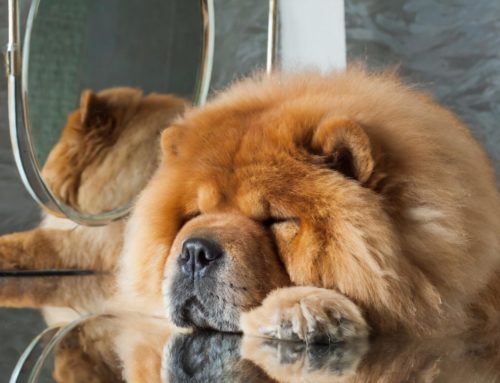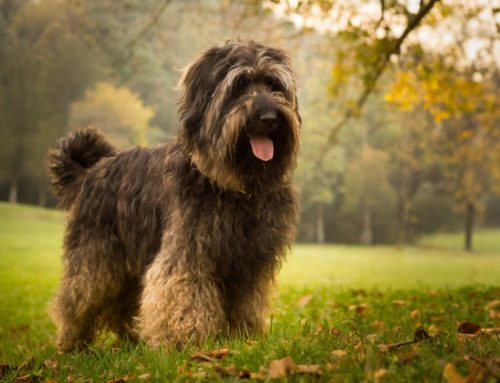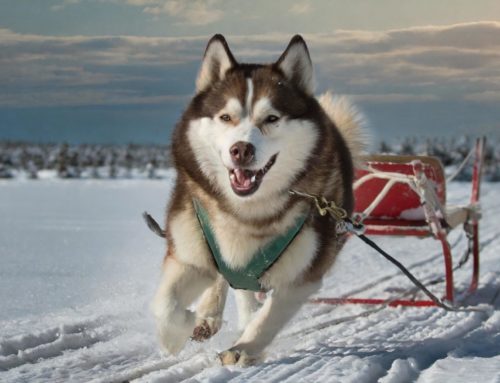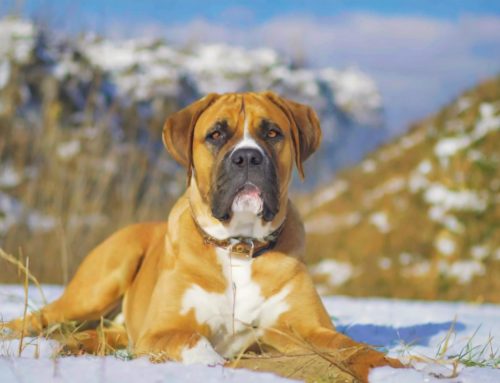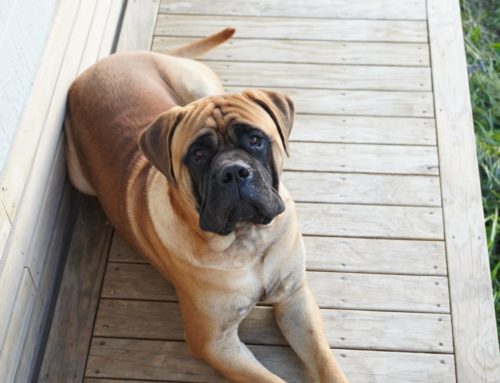
The history of the Australian Shepherd, often affectionately called the Aussie, is an energetic and versatile dog breed known for its endurance and intelligence.
Despite its name, the origin of the Australian Shepherd does not come from Australia, but is in the United States. The breed developed in the 19th century, where breeders crossed European and Australian dogs to create an efficient herding dog.
This crossbreeding resulted in a dog with a thick undercoat and an ability to both herd and be a versatile working dog. The Australian Shepherd Club Netherlands (ASCN) and the Australian Shepherd Club of America (ASCA) are important organisations in the preservation and promotion of the breed.
Since the establishment of ASCA in 1977, which maintains its own breeding book for Australian Shepherds, the breed has been characterised by a strong character and affectionate nature. This makes the Aussie not only a capable herding and working dog, but also a much-loved pet.
Coat and appearance of the Australian Shepherd
The Australian Shepherd, is a medium-sized, versatile herding dog with an impressive coat and a lively personality. Their height at the withers varies, with males usually standing between 52 and 58 centimetres tall and bitches slightly smaller.
These dogs are known for their distinctive merle coat patterns, including blue merle and red merle, but they can also be solid black or red, often with white and/or coppery markings.
An Australian shepherd’s coat is one of its most distinctive features. It is a double coat with a weather-resistant outer layer and a thick undercoat, which protects them in different weather conditions. Regular grooming is essential to keep their coat healthy. Bred for their working abilities, these dogs make excellent herding dogs and drovers.
Aussies are also known for their bright, expressive eyes that range from blue to brown and amber, which enhances their alert and intelligent look. Their energetic and playful nature makes them popular choices for dog sports and active families.
Hereditary diseases and disorders
The Australian shepherd, Is a popular and active dog. Like all breeds, there are certain hereditary diseases and conditions that Australian shepherds can be susceptible to. It is important to get a puppy from a reputable breeder or breed association, which conducts health tests on the parent animals.
Here is a list of some hereditary diseases and conditions that can occur in the Australian shepherd:
- Hip dysplasia: A condition affecting the hip joints, often leading to pain and arthritis.
- Elbow dysplasia: A similar condition to hip dysplasia, but in the elbows.
- Collie Eye Anomaly (CEA): An eye disease affecting the retina, choroid and sclera of the eye.
- Epilepsy: A neurological disorder that can lead to repeated epileptic seizures.
- Multidrug Resistance 1 (MDR1): A genetic disorder that causes the dog to be sensitive to certain drugs.
- Progressive Retinal Atrophy (PRA): A degenerative eye condition that can lead to blindness.
The character and behaviour of the Australian shepherd
The Australian Shepherd, is known for its energetic and playful nature. If you are considering taking in an Australian Shepherd puppy, it is important to know that these dogs need to expend a lot of energy. They are known as medium-sized dogs, with a shoulder height ranging from 52 to 58 cm and a weight of around 20 to 30 kg.
The Australian shepherd’s character is versatile: they are intelligent, loyal, and have a strong desire to work and please. This makes them excellent for various dog sports and activities such as agility and obedience. They are dogs that like having a task to do, and they can quickly get bored if they do not get enough mental and physical stimulation.
Socialisation is crucial from puppyhood onwards. A well-socialised Aussie is friendly and open, but can be somewhat reserved with strangers. Their herding instinct can sometimes lead to herding people and other animals, especially in young dogs.
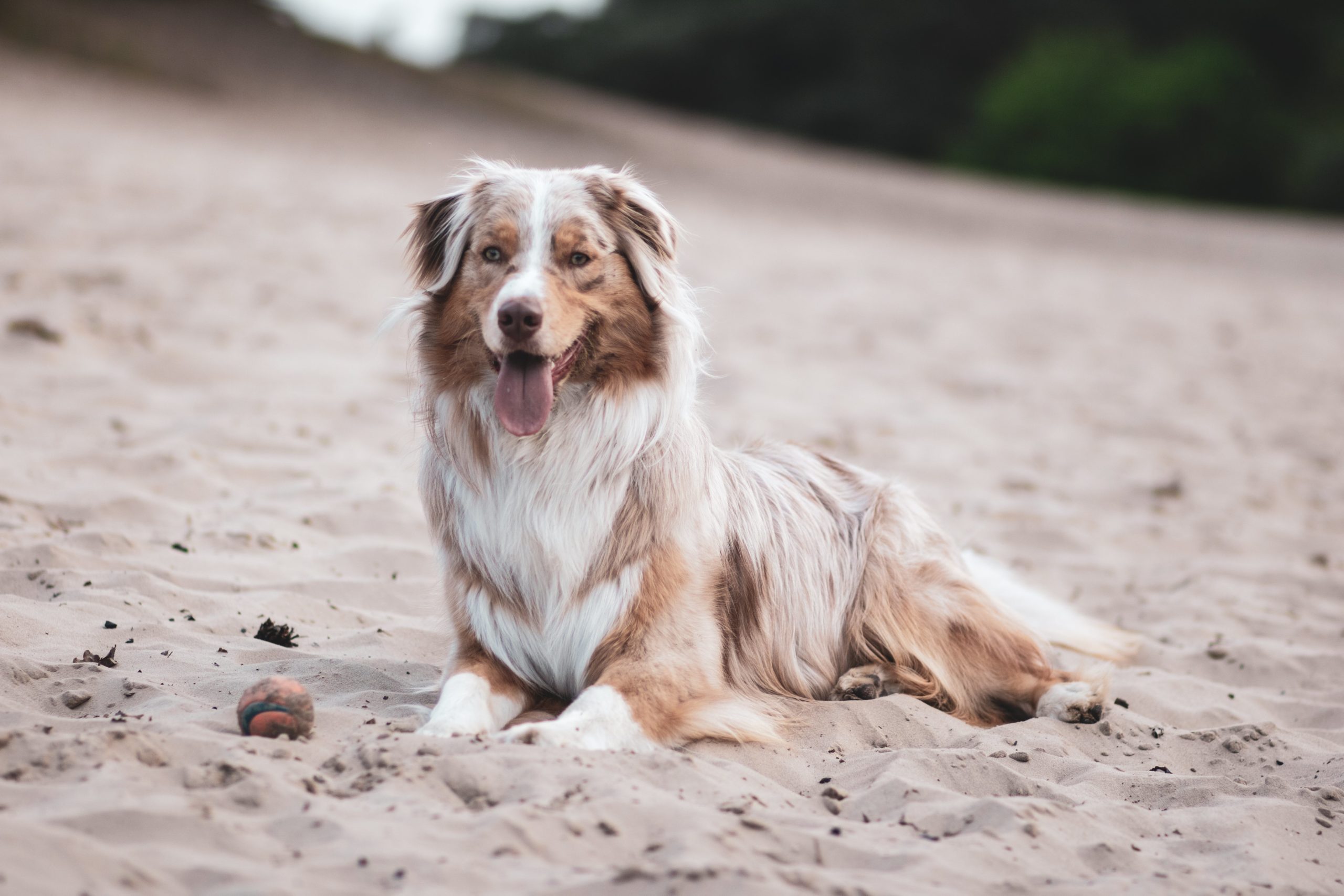
The Care of the Australian Shepherd
Caring for an Australian shepherd, requires attention and dedication. These medium-sized dogs, known for their lively nature and versatility, need regular grooming to stay healthy and happy. First of all, it is important to take good care of your Australian Shepherd’s coat.
This breed has a thick undercoat and, depending on the gene, can range from smooth to slightly wavy. Regular brushing is essential to prevent tangles and remove loose hair, especially during moulting. The Australian Shepherd is not a high-maintenance dog in terms of bathing; a bath when needed is sufficient, to preserve the natural oils in their coat.
Socialisation and training are crucial for an Australian Shepherd, especially from puppyhood onwards. These intelligent dogs learn quickly, but require consistent training and mental stimulation to avoid behavioural problems. They are known for their work drive and do well in dog sports such as agility and obedience.
Socialisation and upbringing of the Australian shepherd
The socialisation and upbringing of an Australian shepherd, are crucial to the development of this dog’s character. If you are taking in an Australian shepherd puppy, start socialisation early. Introduce your pup to different people, animals, environments and situations.
This helps to develop a confident, well-adjusted dog that can cope well with all kinds of situations. The Australian shepherd is a medium-sized, energetic and intelligent dog. It is known for its versatility and can excel in various dog sports and activities.
It is important to offer your Aussie mental and physical challenges. Consistent, positive training techniques work best for this breed. Understanding the history of the Australian shepherd can also help with its upbringing. This breed was originally bred for herding cattle and thus has a natural drive to work and exercise.
Make sure your Aussie gets enough exercise to get rid of its energy. This will prevent behavioural problems that can arise from boredom or excess energy.
How much experience does an Australian shepherd require
Having an Australian shepherd, requires a certain amount of experience with dogs. This is mainly due to the energetic and intelligent nature of the Australian Shepherd. These medium-sized dogs are active and need consistent training and plenty of exercise.
Since the Australian Shepherd Club of America (ASCA) was founded in 1977, there have been guidelines for the care and upbringing of this breed. These dogs are known for their versatility and can excel in various dog sports, indicating their need for mental stimulation and physical activity.
People considering taking in an Australian Shepherd or a Miniature American Shepherd, a smaller variant, should be aware of the high energy and intensive grooming regime of these dogs. This breed is not suitable for someone taking in a dog for the first time unless they are willing to put time and effort into understanding the unique needs of the breed.
Is training necessary?
Training is absolutely necessary for the Australian shepherd. These medium-sized dogs are known for their intelligence and energy. They have a strong tendency to exhibit behaviours typical of herding dogs, such as herding and a natural urge to move. This makes consistent training and socialisation essential.
From the moment you take in an Australian shepherd, you should start training and socialisation. This will help prevent problems such as excessive barking, chewing and running after animals. These dogs have a lot of energy and need to get rid of it, both physically and mentally. They excel in dog sports and activities that stimulate them mentally.
A well-trained Australian shepherd can be a great friend for life, provided training is approached in a positive and consistent way.
How much exercise does an Australian shepherd need?
The Australian shepherd, is a medium-sized, energetic and active dog. This shepherd dog needs a significant amount of exercise. It is essential to know that when you take in an Australian Shepherd, you are committing to an active lifestyle.
Australian shepherds are bred for work, primarily herding cattle, and so they have a lot of energy. Daily long walks, running, and time to play freely are crucial to managing their energy levels. Without adequate exercise, an Australian Shepherd may begin to exhibit undesirable behaviors, such as being destructive or barking excessively.
Many owners of Australian Shepherds involve their dogs in various dog sports such as agility, flyball, or frisbee. These activities are not only good for their physical health, but also for their mental stimulation. Clearly, Australian shepherds are more than just pets; they are friends for life who want to be constantly active and involved.
So, if you are considering getting an Australian Shepherd puppy or already have an Aussie, remember that these dogs need lots of exercise and mental stimulation.

How is it getting along with children?
This medium-sized dog is an excellent choice for families with children, provided certain conditions are met. An Australian Shepherd can be very playful and loving, which makes it an ideal playmate for children.
They are generally patient and tolerant, but it is always important to supervise interactions between dogs and young children. Ensuring proper socialisation from puppy age is crucial. This helps the Australian Shepherd learn correct behaviour and understand how to behave around children.
Australian Shepherds are herding dogs, so they can sometimes have a tendency to ‘herd’, meaning they try to lead or control children or other pets. This behaviour needs to be managed in a positive way. Training and consistent guidelines are essential to ensure that the Australian Shepherd interacts well with children.
Benefits of an Australian shepherd
- Intelligence: Aussies are known for their keen intellect and trainability, which makes them excellent for obedience, dog sports and as a working dog.
- Energy and Stamina: They have plenty of energy and are ideal for active families or individuals who like to be outdoors.
- Loyalty: These dogs are very loyal to their families and make excellent companions.
- Versatility: The Aussie is versatile and adapts well to different situations and tasks, from herding to therapy dog.
Disadvantages of an Australian shepherd
- High Energy Requirement: Their high energy level can be a challenge for people who do not have much time for intense exercise and mental stimulation.
- Grooming Needs: Their thick coat requires regular grooming to prevent tangles and dirt build-up.
- Shepherd instinct: Their natural tendency to herd can be problematic with young children or other pets.
- Potential Health Problems: Like many breeds, Aussies can be prone to certain hereditary health problems, including hip dysplasia and epilepsy.
How old will an Australian shepherd get
A dog breed known for its liveliness and robust health. On average, Australian shepherds have a life expectancy of around 12 to 15 years, although some individuals can live even longer under the right conditions and with proper care.
As with all dog breeds, the lifespan of an Aussie depends on several factors, including genetics, lifestyle, nutrition and the quality of veterinary care.
Price of an Australian shepherd
